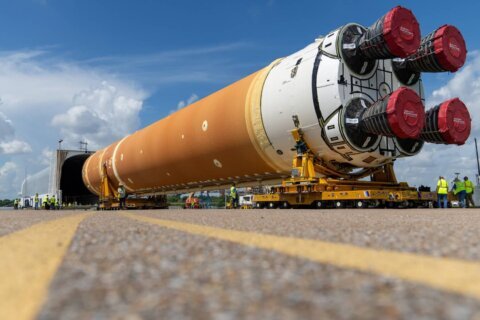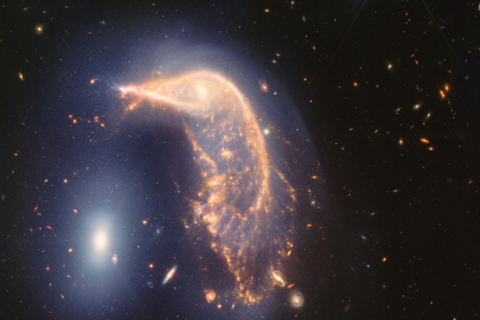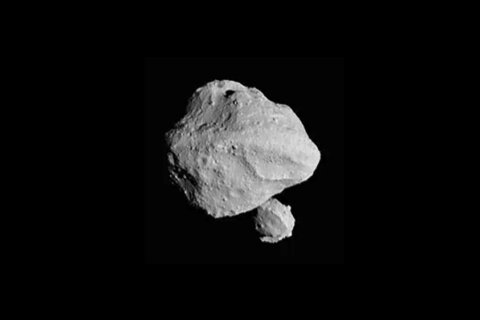Weather-wise, Friday is unfortunately a chilly day in the D.C. area, with clouds and rain in the forecast. But in the realm of near-Earth space and our planet’s magnetic field, a severe geomagnetic storm watch has been issued by the National Oceanic and Atmospheric Administration for Levels G2 (Moderate), G3 (Strong) and G4 (Severe).
Hours earlier than predicted, the G4 geomagnetic storm has hit the Earth’s magnetic field. The geomagnetic storms were forecast for Friday, Saturday and Sunday, and very likely to produce aurora — possibly making the northern lights visible in the U.S. on Friday night and after midnight into Saturday and possibly Sunday night.
This is the first G4 alert issued since 2005. NOAA Space Weather Scale descriptions can be found online.
The sun has had two large and complex sunspot groups that have erupted with solar flares and ejected five separate big blobs of solar material called Coronal Mass Ejections (CMEs) from the sun over the past several days. Three of the CMEs will overtake the two slower CMEs in an event known as a fairly rare cannibal CME, which impacts the realm of near-earth space and our planet’s magnetic field.
According to NOAA, the area of impact is primarily poleward of 45 degrees geomagnetic latitude. Potential impacts may include:
- Induced currents — Possible widespread voltage control problems and some protective systems may mistakenly trip out key assets from the power grid. Induced pipeline currents intensify.
- Spacecraft — Systems may experience surface charging; increased drag on low earth orbit satellites, and tracking and orientation problems may occur.
- Navigation — Satellite navigation (GPS) degraded or inoperable for hours.
- Radio — HF (high frequency) radio propagation sporadic or blacked out.
- Aurora — May be seen as low as Alabama and northern California.
Will the northern lights be visible from DC region?
The NOAA Space Weather Prediction Center Aurora Dashboard (Experimental) provides a two-day prediction of aurora. U.S. states have a good chance of seeing aurora late Friday night and after midnight into Saturday.
NOAA forecasts G1 (minor) conditions from 8 p.m. to 11 p.m. Friday, before ramping up to between G3 (strong) and G4 (severe) conditions from 11 p.m. Friday to 8 a.m. Saturday. G3 and G4 storms reliably produce aurora.
The best chance later in the weekend comes between 11 p.m. Saturday and 2 a.m. Sunday, when NOAA forecasts G2 (moderate) conditions.
How to view aurora
Your best bet is to monitor NOAA and space related social media sites, such as EarthSky.org and Space.com, for updates. The current forecast shows the aurora may be seen as low as Alabama and northern California. If we get a break in the clouds it will be worth taking a look to the North from a dark sky site with a clear horizon.
You might be able to detect some color in the sky if aurora are present, but they would likely be low on the Northern horizon. Wide field binoculars will help your search.
Use a camera or smartphone that can take exposures of several seconds — including using “night sky” or “low light” settings if your camera has them — of the Northern horizon. Steady the camera or use a tripod for best image results. The camera may capture aurora that your eyes did not.
The D.C. region had several aurora events visible in March, April and November 2023.
I check Spaceweather.com every day just as I do my local weather. It has a daily snapshot of what the space weather in the solar system is going to be like and a current image of the sun. Today’s posting explains what happened on the Sun over the past few days to cause our current space weather.
Space weather’s impact
With our terrestrial weather being such a factor in our daily lives here in the DMV, and frankly, the rest of the world, we are also directly affected by space weather, which can produce a variety of events, including the forecast geomagnetic storms and aurora.
Space weather, like our terrestrial weather, is caused by Earth’s interaction with our star, the sun. We know it will be there every new day and count on it for life-giving warmth and energy. We also have become accustomed to it being well behaved. What many people may not know is that our sun undergoes an 11-year solar cycle that can affect space weather throughout our solar system.
Our sun is a 4.5-billion-year-old star that we have been monitoring since Galileo. Today, humans have a fleet of spacecraft that monitor the sun and space weather 24/7/365.
The sun is currently in solar cycle 25 and is progressing toward solar maximum, which is predicted to occur July 2025. As the sun approaches solar maximum it produces more sunspots and solar events, which produce space weather events such as this Level G4 Geomagnetic Storm.
The sun had an episode of disturbed behavior in 1859 that, if it were to occur today, could adversely affect us (if we were unprepared).
On Sept. 1, 1859, the sun experienced a solar storm episode that was observed by solar astronomer Richard Carrington that ended up bearing his name, “the Carrington Event.” This was a watershed event in solar astronomy and also the sun’s affect on the Earth, as nothing like it has been seen since — thankfully.
If a Carrington-level solar event were to happen today, the affect on modern society’s infrastructure could be potentially catastrophic, especially on the electrical grid, which powers everything else. If you think this is unlikely or too sci-fi to be true, I suggest you read the report by the National Academies of Science published in 2008.
Last year the sun had a very powerful space weather event on March 12, which fortunately for us, occurred on the far side of the sun.
You listen to WTOP for “traffic and weather together on the eights.” Maybe now you will want to include a check on space weather, too, as part of your daily routine.
I’ll be at sea in the Southern Atlantic Ocean trying to chase the Southern Lights with my camera. If I get any worthy astropics, I’ll be sharing them on WTOP. Wishing all of us clear skies and a good sky show!
Follow me on X @SkyGuyinVA, Facebook and check out my daily blog to keep up with the latest news in astronomy and space exploration.
Get breaking news and daily headlines delivered to your email inbox by signing up here.
© 2024 WTOP. All Rights Reserved. This website is not intended for users located within the European Economic Area.







